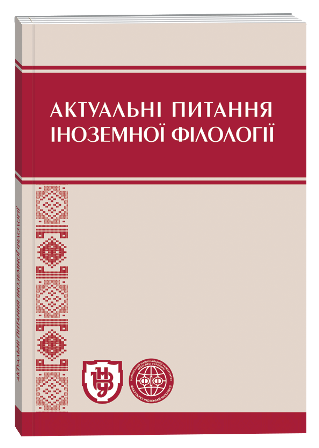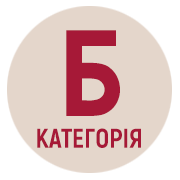RENDERING OF EUPHEMISMS IN UKRAINIAN TRANSLATIONS OF W. SHAKESPEARE’S “OTHELLO. THE MOOR OF VENICE” (BY V. SCHERBANENKO, P. KULISH, I. STESHENKO)
Keywords:
drama translation, Shakespeare, semiotics, euphemism, linguistic unit, meaningAbstract
The article presents an insight into Ukrainian versions of Shakespeare’s “Othello. The Moor of Venice” translated by V. Scherbanenko, P. Kulish, I. Steshenko that were analyzed through the prism of semiotics. Semiotics is considered as an effective tool for analyzing texts, in particular dramatic. The relevance of semiotics for drama translation can be explained by the fact that drama as a genre combines at least two different codes – literary and theatrical. Thus, its ability to discern shades of meanings of signs and codes in different (sometimes unexpected) contexts gives impetus to new interpretations of conventional linguistic units, and, consequently, to the emergence of new translations. The analysis of the tragedy revealed W. Shakespeare’s exceptional focus on the use of ambiguous language units. Contrasts of meanings of such units are pragmatically exploited by the playwright to convey special messages to the recipient. In semiotic terms, ambiguous language units to which the author attaches great importance are referred to as “semiotically charged”. Thus, it was determined that semiotically charged units are actualized in the tragedy in a form of euphemistic substitutions or euphemisms. The comparative analysis of translations of euphemistic substitutions includes an insight into translation strategies implemented by translators (V. Scherbanenko, P. Kulish, I. Steshenko) to render semiotically charged units in the target language. Finally, it can be inferred from the article that while rendering euphemisms, translators resort to such strategies as compensation, semantic development of the original euphemism in the target language, omission, substitution.
References
Aaltonen, Sirkku. 2000. Time – Sharing on Stage. Drama Translation in Theatre and Society. Sydney: Multilingual Matters.
Anderman, Gunilla. 2001. Drama Translation. Routledge Encyclopedia of Translation Studies. Shanghai. University Press.
Barkhudarov, Leoniod. 1964. “Pro lensychnu vidpovidnist v poetychnomu perekladi”. Notatky perekladacha. 202–208:67–70.
Barthes, Roland. 1989. Selected works. Semiotics. Poetics. Translated from French by Grigori Kosikov. Moscow. Progress.
Bidnenko, Natalia. 2001. “Drama v aspekti hudozhniogo perekladu (na meteriali rosiyskyh ta ukrayinskyh perekladiv piessy B. Show “Uchen Diyavola”)”. PhD diss.
Danson, Lawrence. 1974. Tragic Alphabet. Shakespeare’s Drama of Language. New Haven and London: Yale Univ. Press.
Denysova, Halyna. “Problemy perekladnosti kulturologichno obumovlenoi leksyky”. PhD diss.
Empson, William. 1973. Seven Types of Ambiguity. Harmondsworth: Penguin.
Krasnova, Ludmilla. 1997. “Do problemy analizy ta interprytatsii hudozhniogo tvoru”. Naukovyi Visnyk Drogibytskogo Universytetu.
Lanovyk, Mariana. 2006. “Teoria vidnosnosti khudozhniogo perekladu: literaturni proektsii”. Vystnyk Ternopilskogo Natsionalnogo Pedagogychnogo Universytetu imeni V. Gnatiuka 469: 22–30.
Levin, Yuri. 1998. Vybrane. Poetica. Semiotica. Vydavnytstvo Moskva. 70:43.
Matiusha, Viktoria. 2008. “Asymetria v ukrayinskyh perekladah suchasnoyi anglomovnoyi dramy”. PhD diss. 23: 13–15.
Mospan, Natalia. 2009.“Semiolinhvistychnyi aspekt kazok R. Kiplinga v ukrayinskyh perekladah”. PhD diss. 250: 34–82.
Nekriach, Tatiana. 2013. “Pereklad dlia stseny: perekladach yak spivrezhysser”. Movni ta kontseptualni kartyny svitu 248: 241–245.
Shakespeare, William. 1986. Othello. Translated from English by Iryna Steshenko. Kyiv: Dnipro.
Shakespeare, William. 1882. Othello. Shakespeare’s Works. Translated from English by Panteleimon Kulish. Lviv: Taras Shevchenko Community Publishing house.
Shakespeare, William. 1927. Othello. Translated from English by Volodymyr Scherbanenko. Kharkiv: State Publishing house of Ukraine.
Shakespeare, William. 1993. The Tragedy of Othello, the Moor of Venice. New York: Washington Square Press.
Vasylchenko, Andriy. 2010. “Perekladannia neperekladnostey: semiotychna problema i filosofsky metod”. Filosofska dumka. Filosofia perekladu 13:2.
Zrazhevska, Natalia. 2014. “Mediacultura yak obyekt sotsiokomunikatsyinyh doslidzhen”. Telezhurnalistyka. URL// http://nbuv.gov.ua/UJRN/Tir_2014_13_12.







